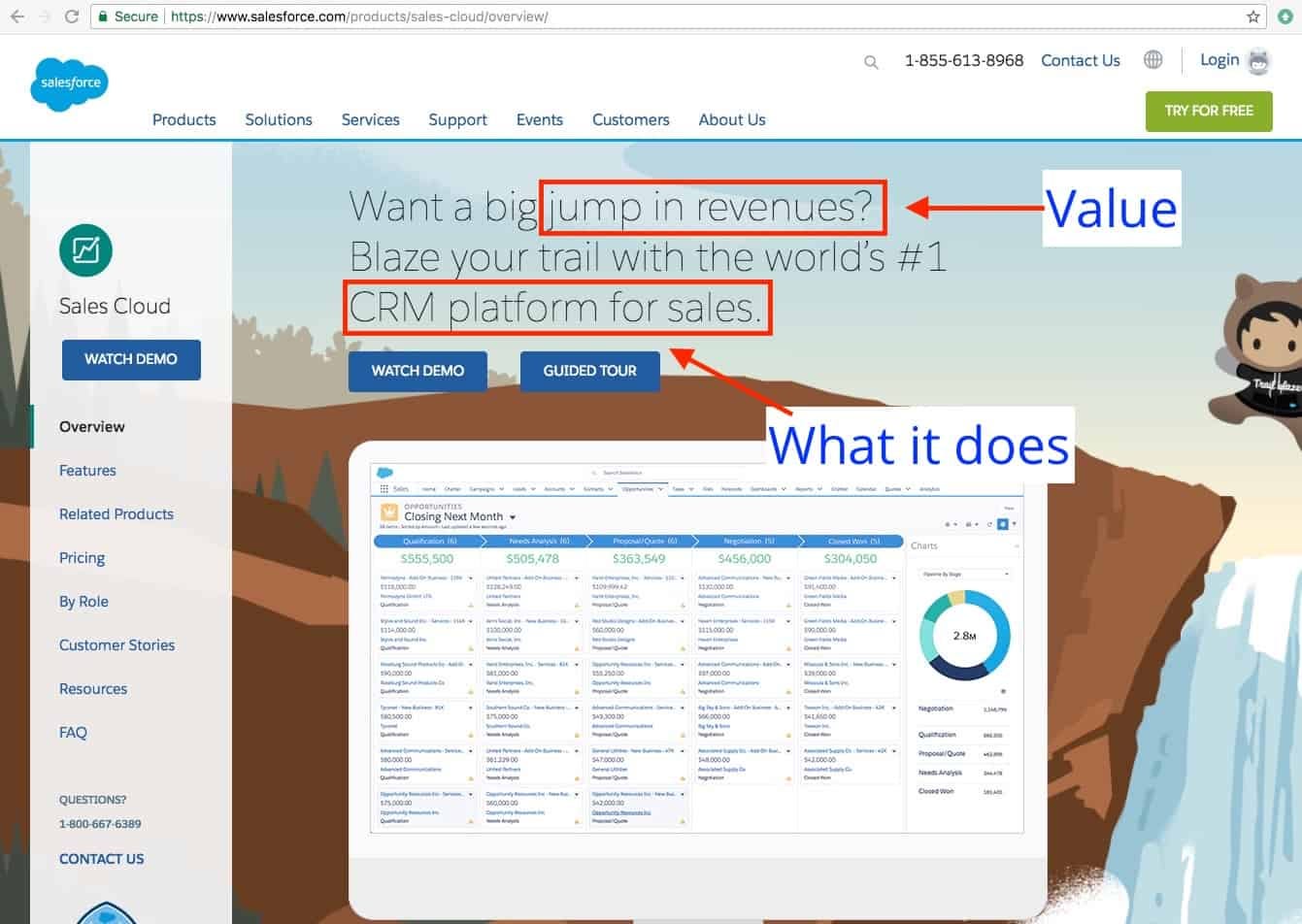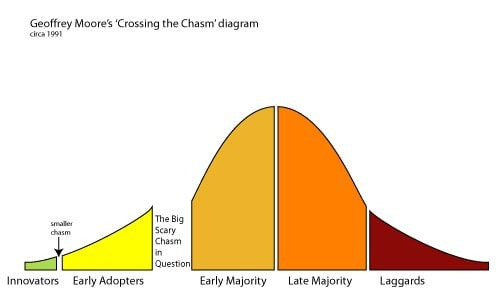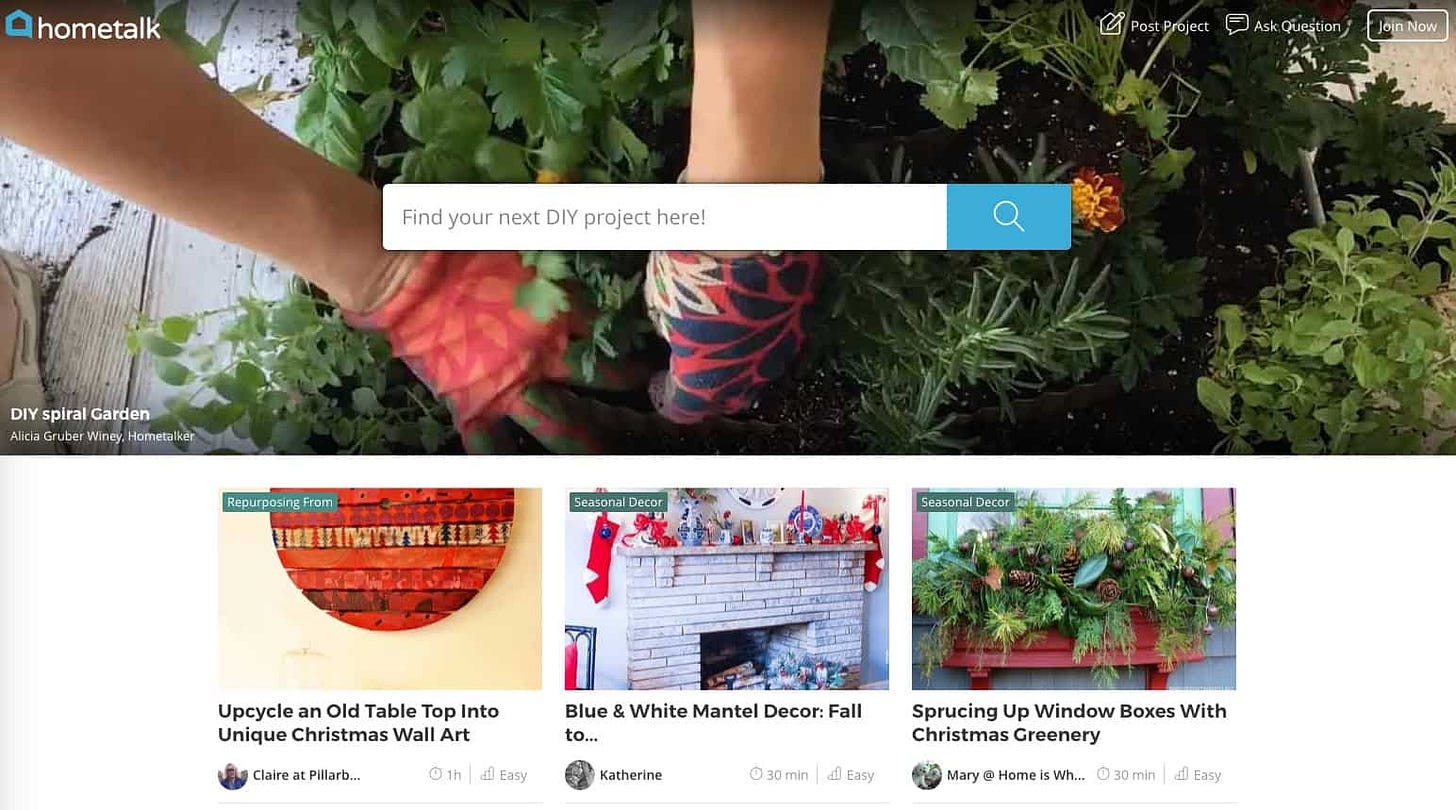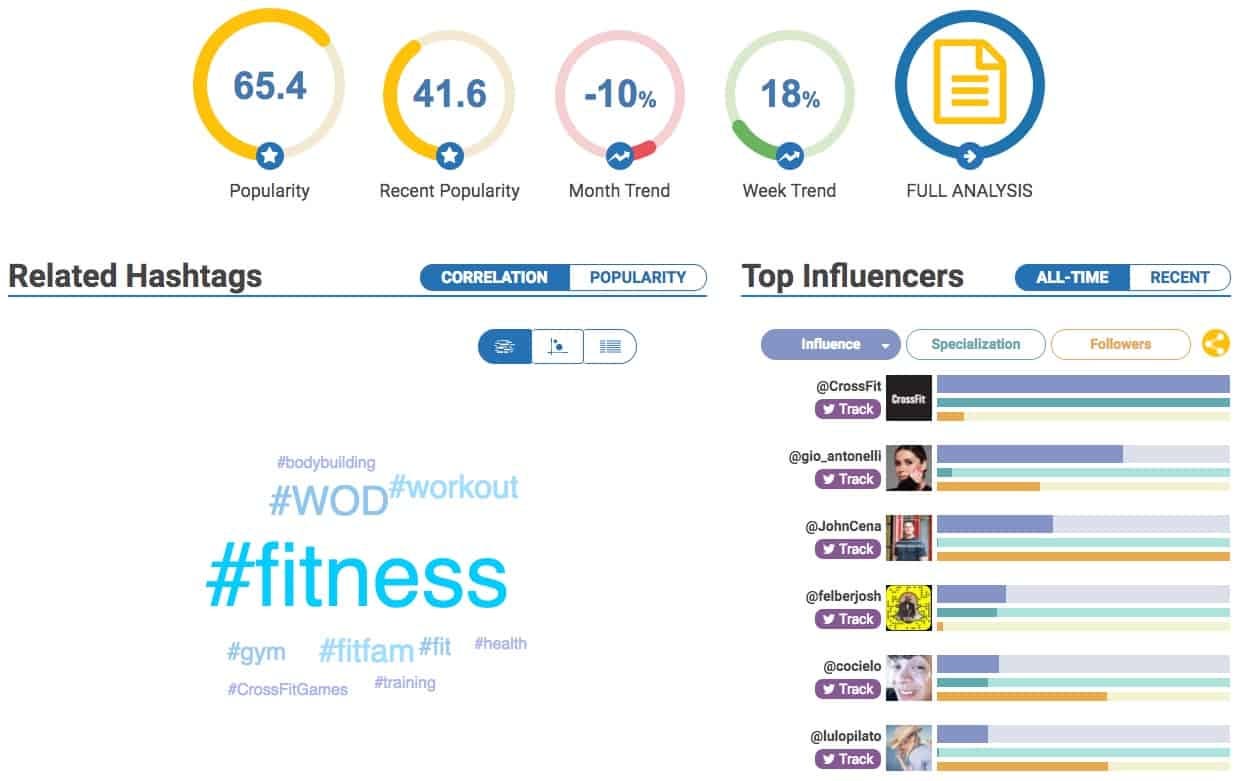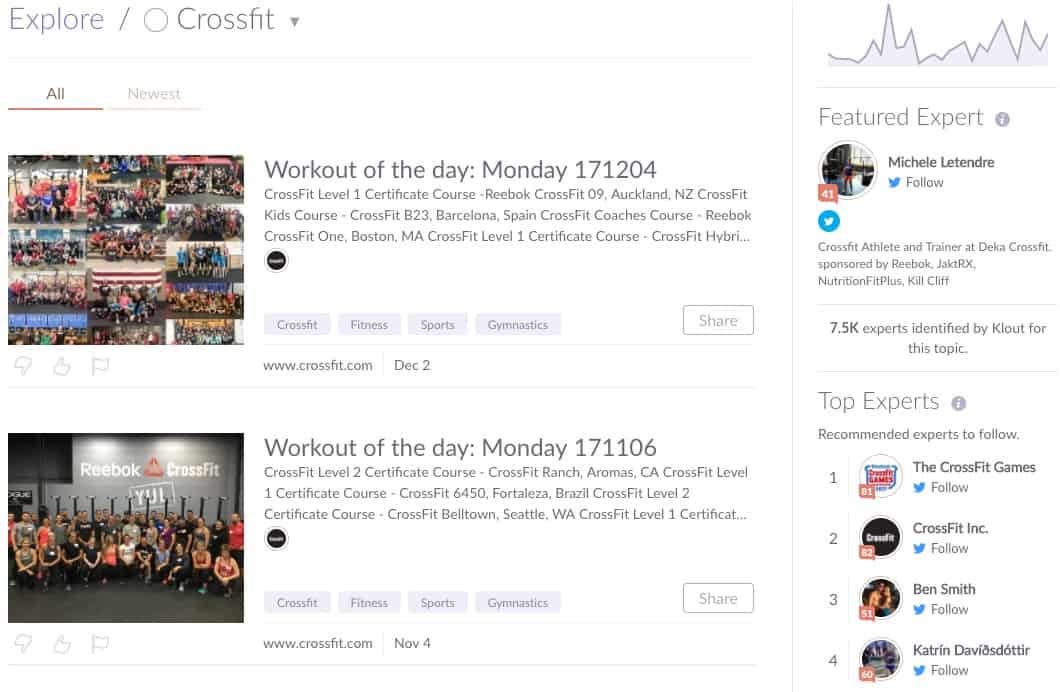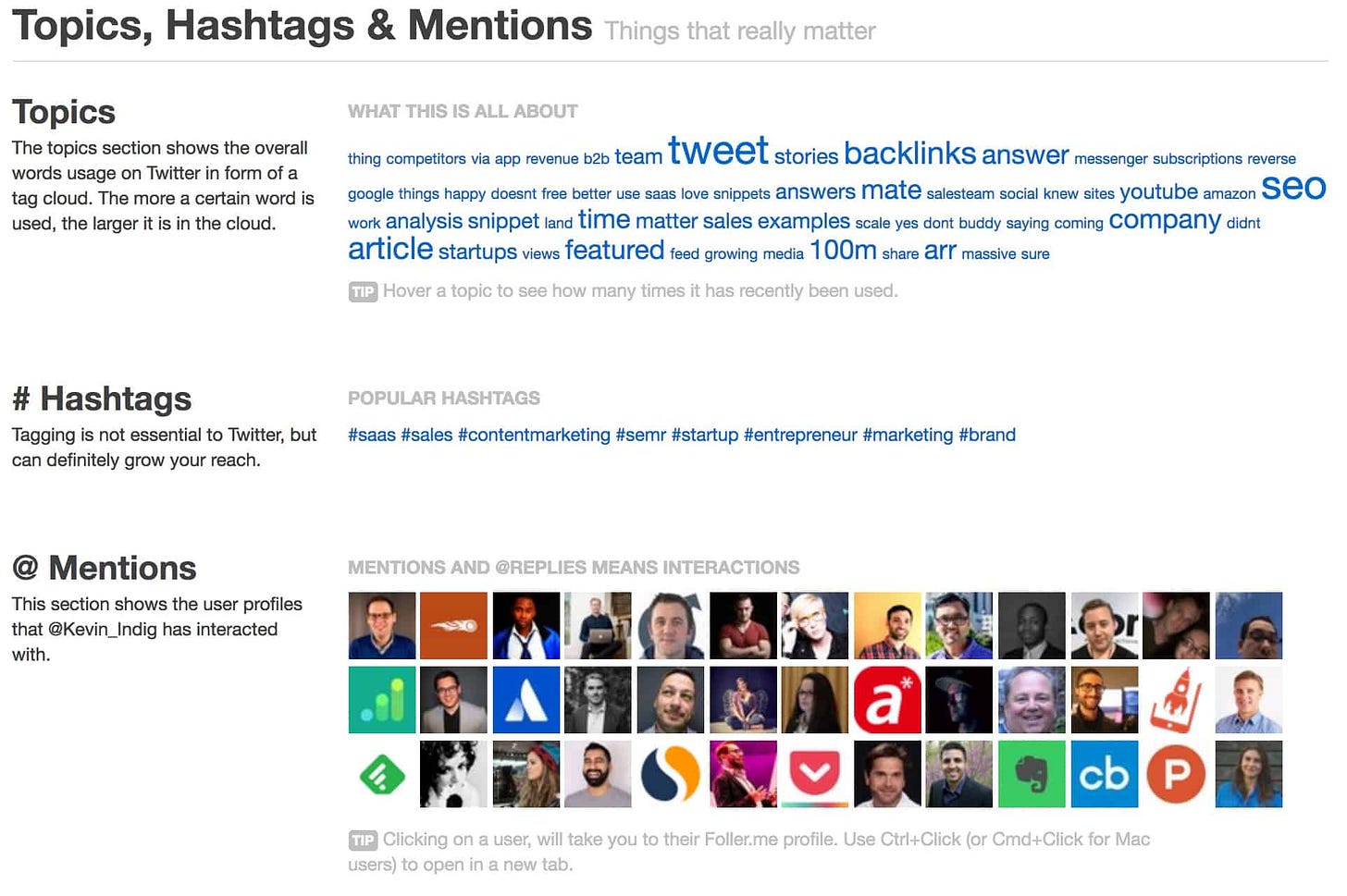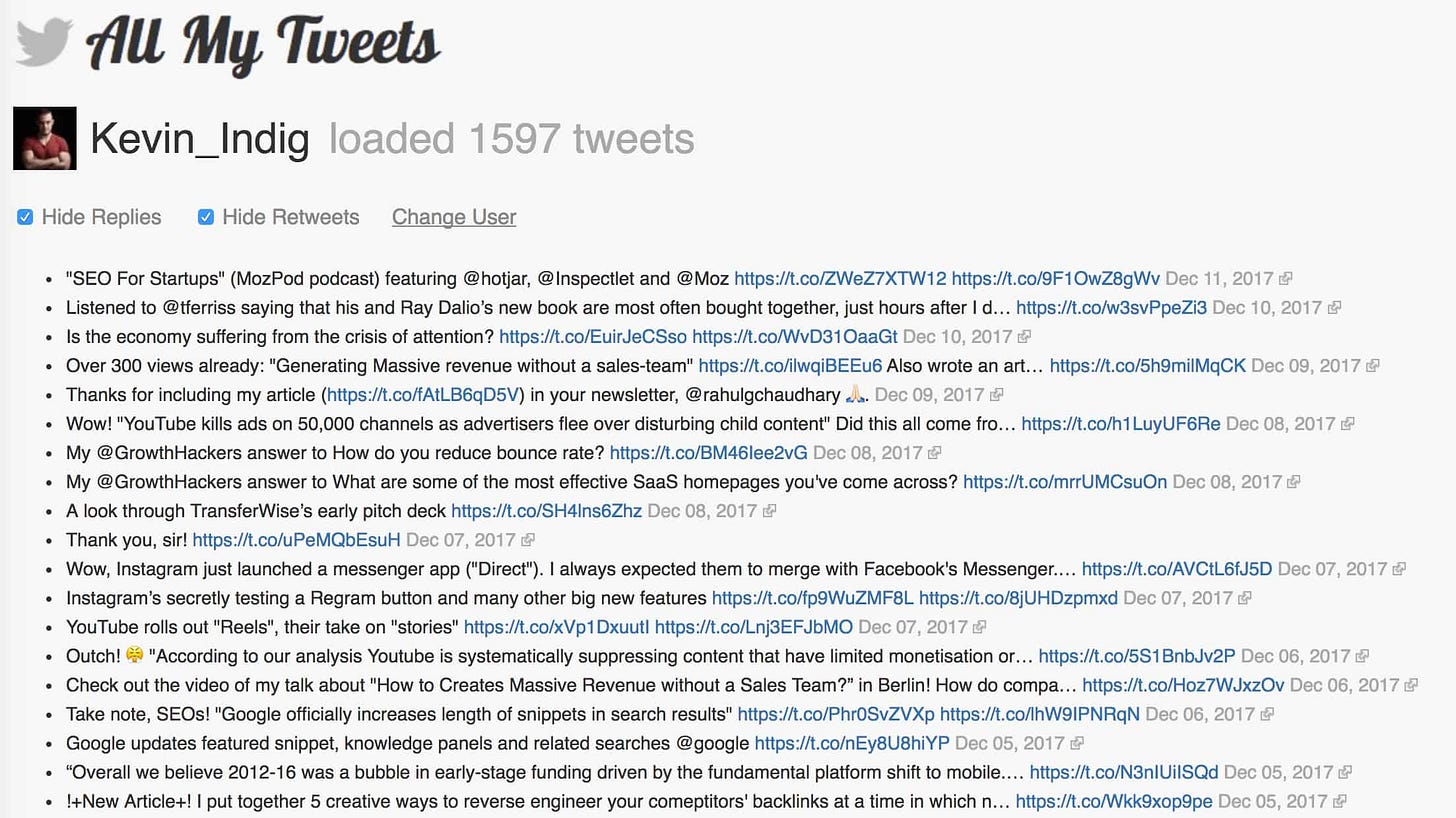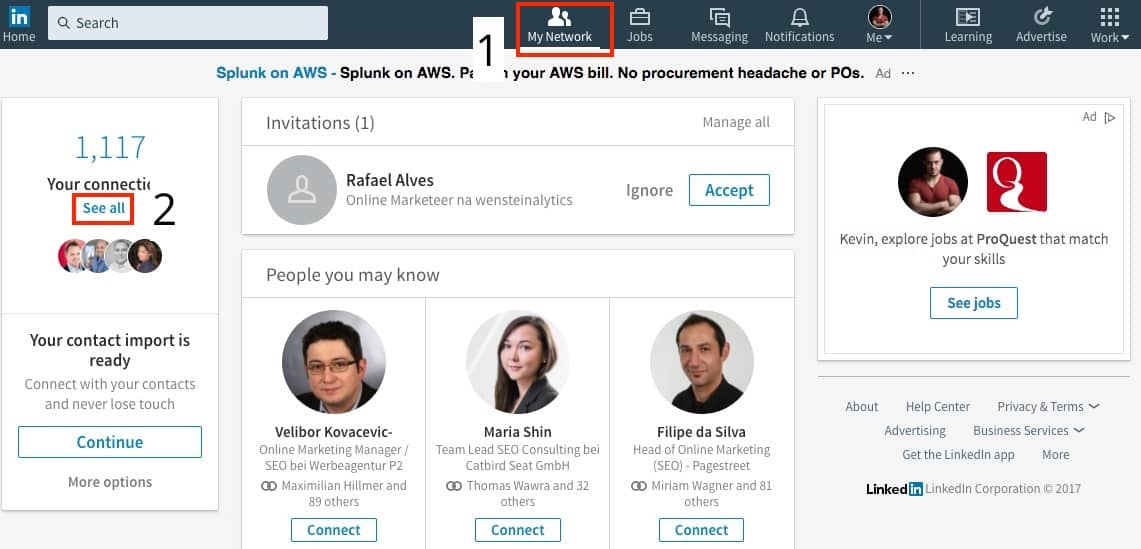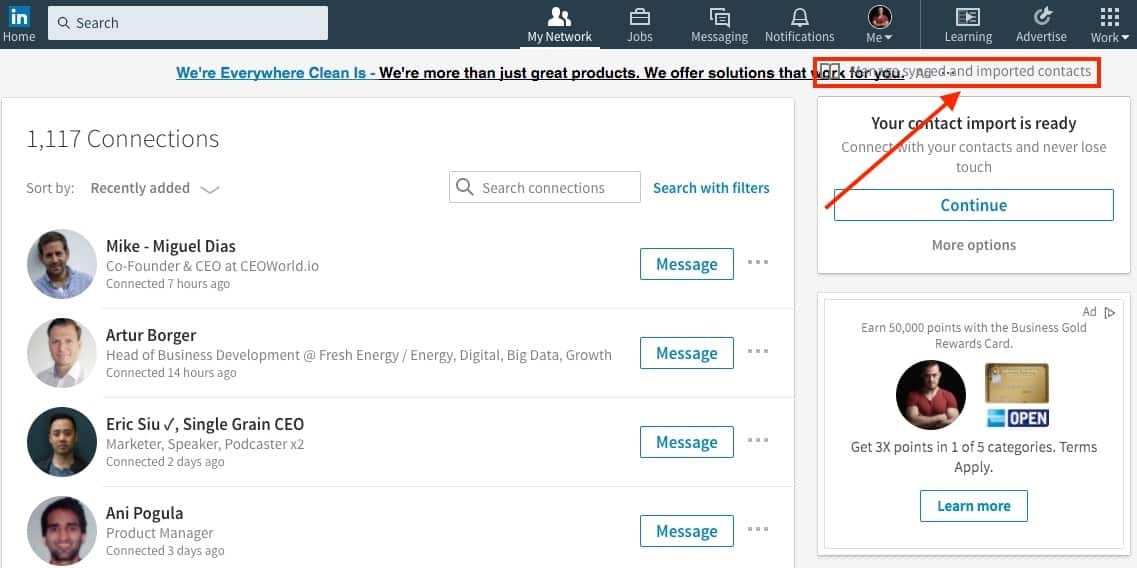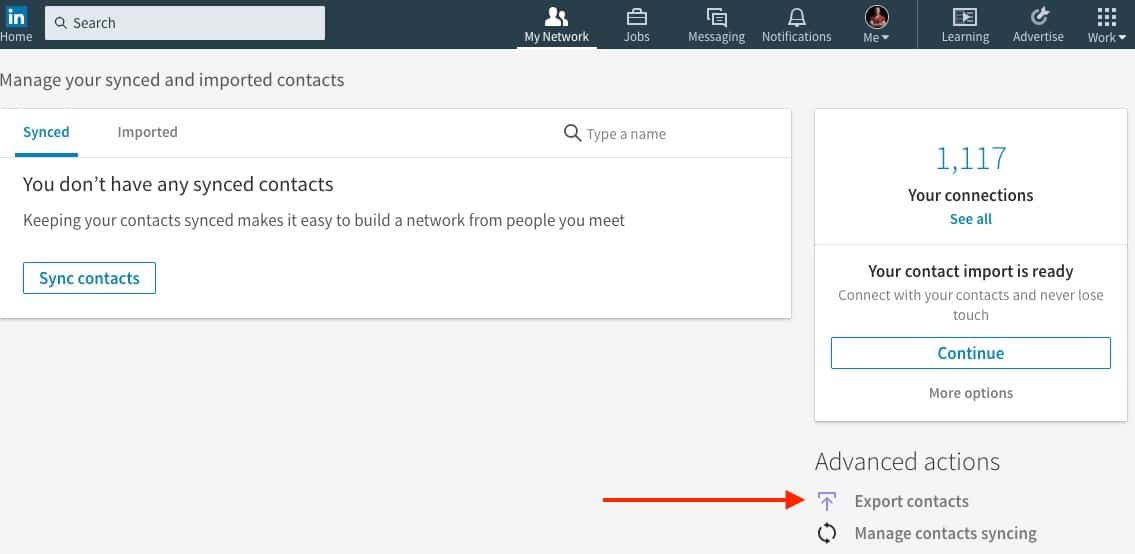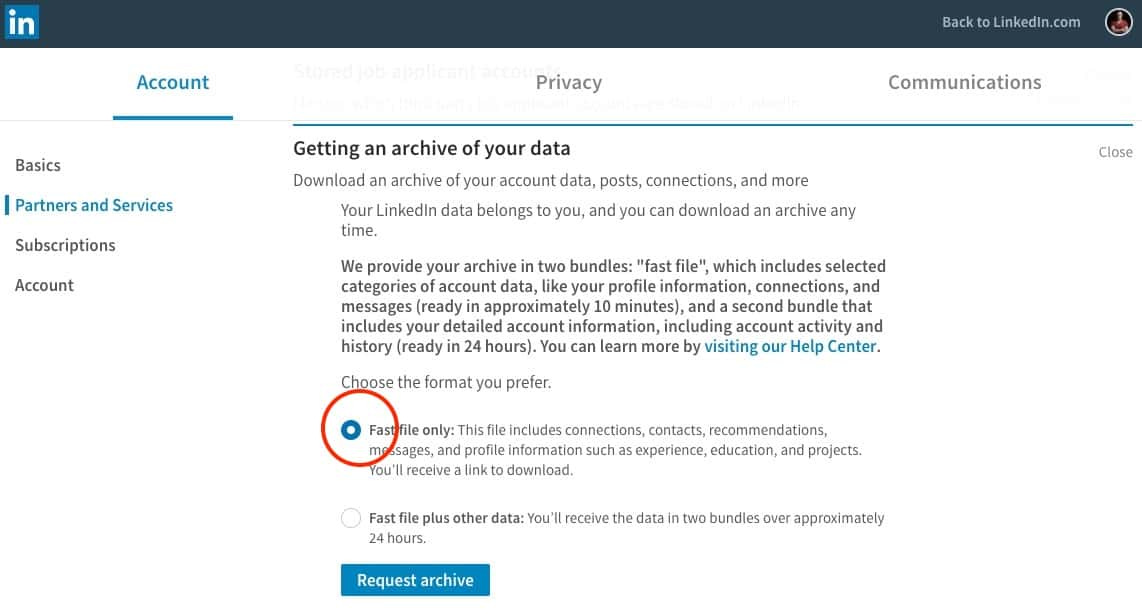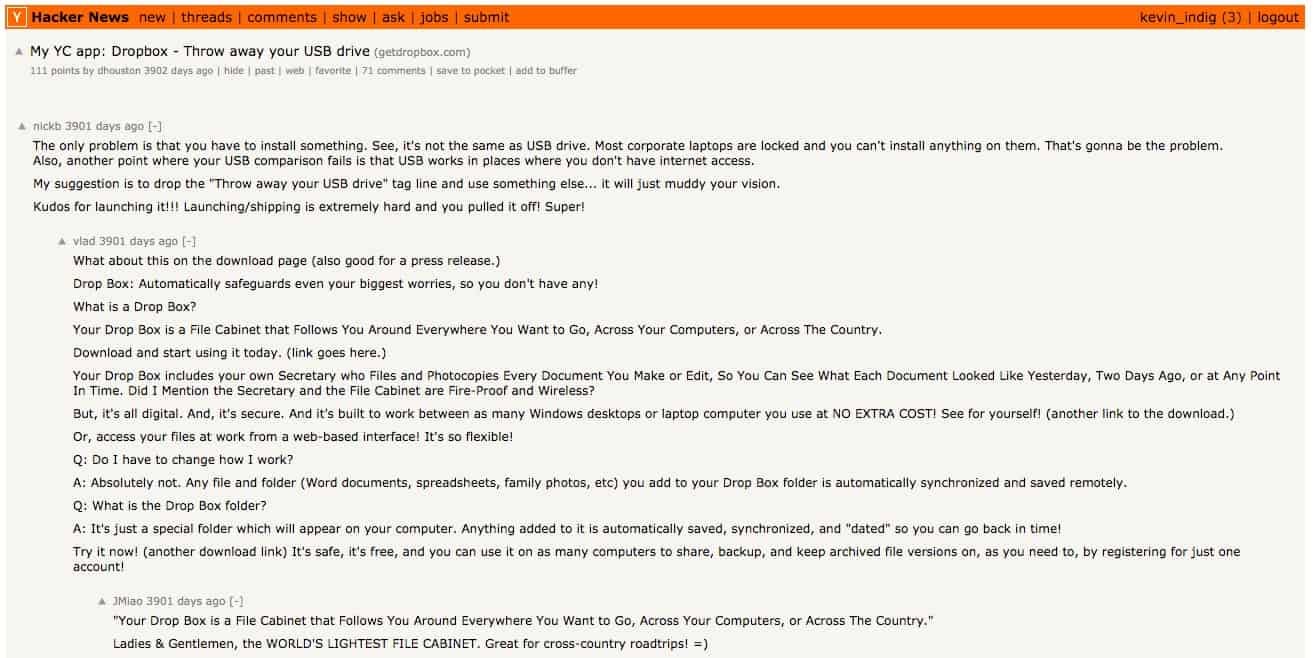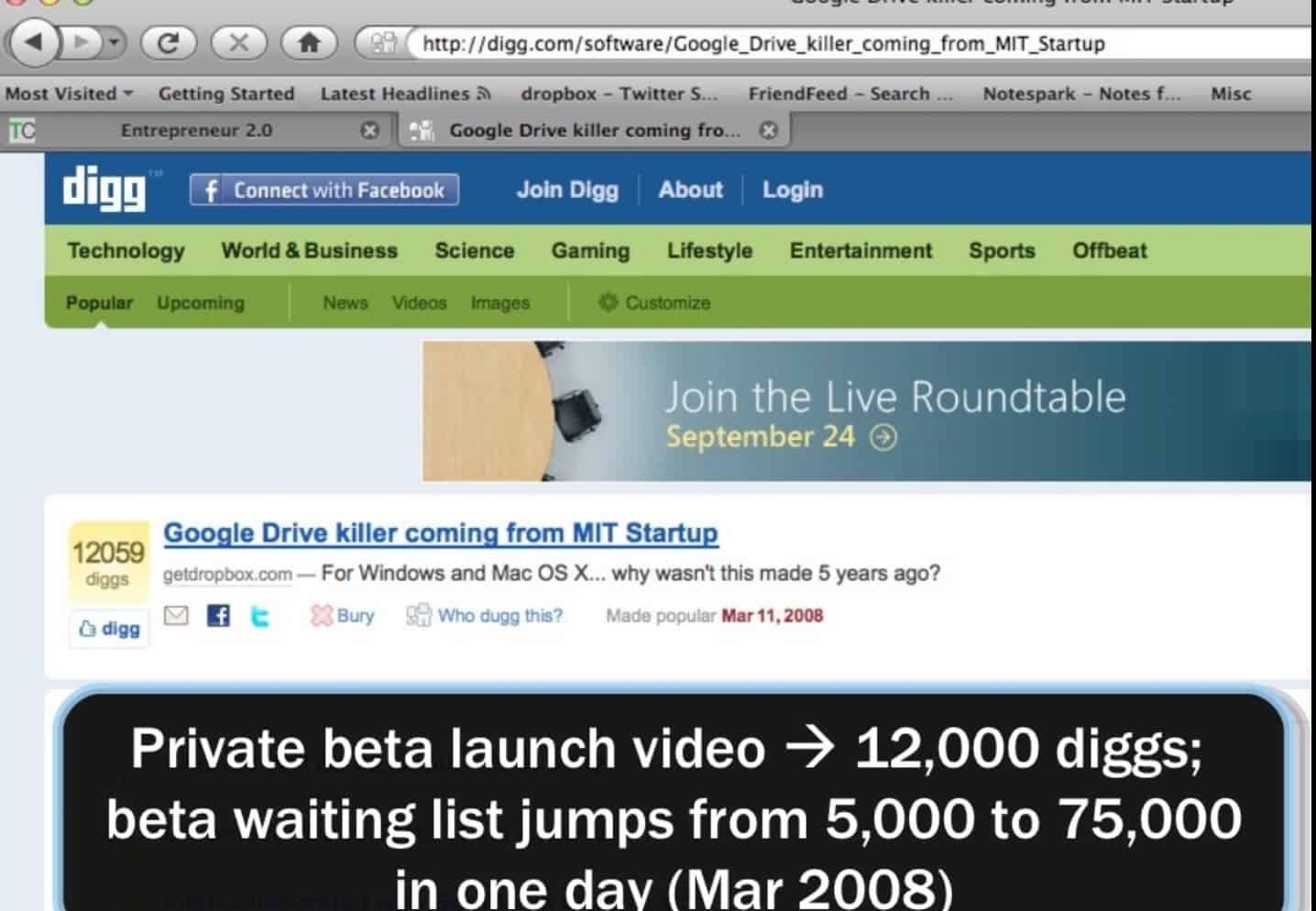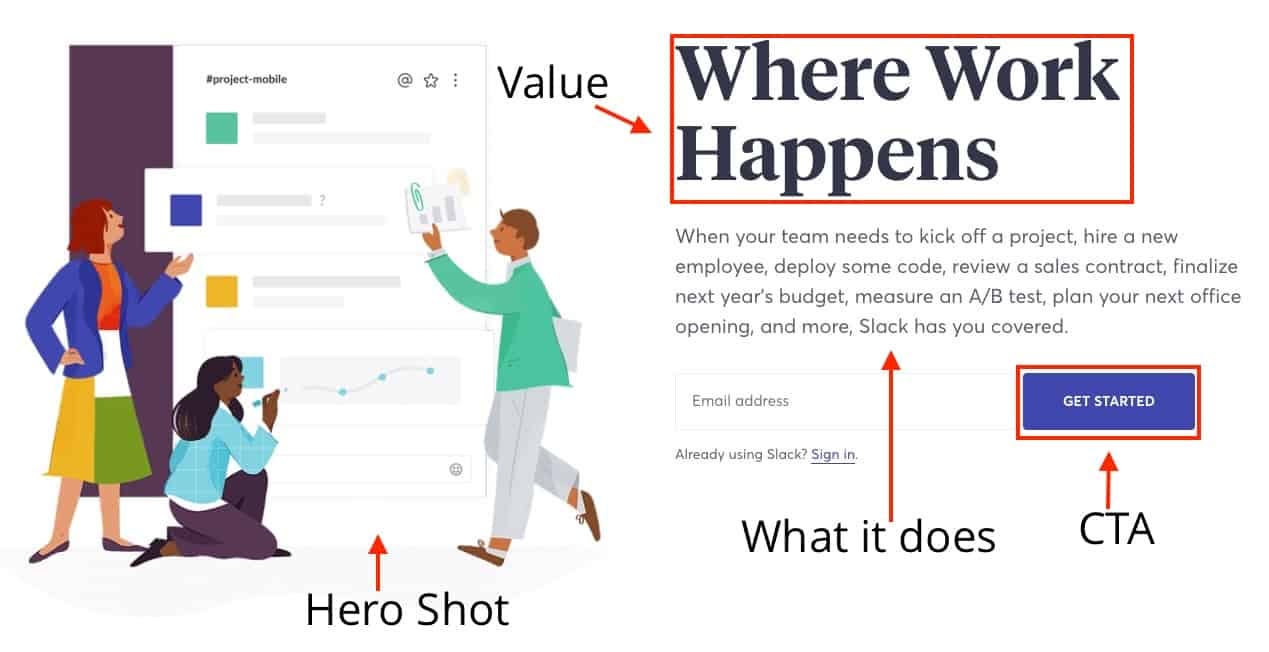Early Adopter Marketing - How startups get their first users
Early adopters play a crucial role in achieving PMF and growth at scale. In this post, I'll show you why they are so important, how to get them, and what to do with them.
When Whitney Wolfe was faced with the challenge of growing her co-founded app, Tinder, with almost no budget, she literally acquired the first users herself.
She went to college fraternities and sororities and pitched the app to students.
She created a flyer, printed 1,000 copies, and paid students $20 to help her put it on car windshields, hand it to people and throw it into dorm mailboxes.
She repeated that process with several universities.
When Wolfe later started her second app, Bumble, she did the exact same thing. [*]
Both companies are now unicorns.
When Daymond Jon started Fubu, he went out to his customers and sold clothes out of the trunk of his car. The company achieved revenue of more than $350M* at its peak. [*]
Brian Chesky and Joe Gebbia kick-started Airbnb's growth by visiting early adopters' homes to take pictures and improve their listings.
Airbnb is a unicorn as well.
The difference between unicorns and zombies
Unicorns don't leave growth up to chance. "Build it and they will come" is no option for them. Neither should it be for you.
"Startups take off because the founders make them take off" (Paul Graham) [*]
"Making a startup take off" happens in three steps:
Create a product
Achieve Product-Market Fit
Scale growth
How well the second step is executed is the difference between a unicorn and a zombie. It's the difference between 0 and 1 #peterthiel.
Unicorns are companies that grow with lightning speed. Zombies are companies that are too good to die and too bad to live. They make just enough money to pay their costs but no profit.
Step #2 is a fork in the road. Messing it up is the fastest way to become a zombie.
The #1 reason why startups fail is because they create something no one needs. Other popular ways to fail related to messing up step 2 are having a poor product, poor marketing, ignoring customers, and mistiming products. [*]
Early adopters play a crucial role in achieving PMF and growth at scale (step 2). They are the key to making a good product great. They lead you to the growth channel that will let your startup take off like a SpaceX rocket.
In this post, I'll show you why they are so important, how to get them, and what to do with them.
Why should you care about early adopters at all?
I actually lied a bit in the title because this article is not about getting your very first users. Getting the first 10 is easy: It's your friends and family. But they come with a problem: bias.
That's why this article is really more about getting your first 20-200 users. That's the critical mass that helps you to take your startup to the next level.
But early adopters are not just "early users", there's more to them. In the process of building a startup, they fulfill three critical functions:
1. Early adopters lead you to Product-Market Fit
For early adopters, your product has to have some value, but it doesn't have to be perfect. They care about functionality, core values, and getting a competitive edge.
Eric Ries, author of "The Lean Startup", writes:
"Early technology adopters lined up around the block for Apple’s original iPhone even though it lacked basic features such as copy and paste, 3G internet speed, and support for corporate e-mail. Google’s original search engine could answer queries about specialized topics such as Stanford University and the Linux operating system, but it would be years before it could organize the world’s organization. However, this did not stop early adopters from singing its praise."
Early adopters can lead you to PMF because they're happy with 80%. That's why they're the perfect first users*. [*]
The key to the last 20% lies in feedback. Early adopters care about the problem, so they will not hold back with their opinions. You should actively communicate with them (what I refer to as "regular communication" later in the article).
The feedback should be targeted at decreasing the time it takes a user to understand product value a.k.a. "aha moment" to an absolute minimum. On the other end, you need to turn up how often users experience product value to an absolute maximum.
Good products start communicating value on the landing page!
Examples:
UBER
Salesforce
2. Early adopters help you to discover the growth channel for your business
Acquiring the first users is always a little all over the place, also known as the shotgun approach. But once you've achieved product-market fit, you will (read: should) know what channels to focus on for growth.
The ideal channel for growth is a mix of product, business, and market. Brian Balfour calls it product-channel fit*, the idea that every product has an optimal distribution channel. Early adopters can point you in the right direction by analyzing where they came from and asking them directly.[*]
There's an important component to growing through that channel: the Northstar metric. It's the one number that everyone should work on going up. Like a rising tide lifts all boats, the Northstar metric moves everything else up. It's the KPI for growth.
Examples:
Facebook: MAU - monthly active users.
Airbnb: # of bookings.
UBER: # of completed rides.
Your business model will give you a hypothesis for what the Northstar Metric could be, but early adopters verify it. Dissect how they move through the AARR funnel (acquisition, activation, retention, referral) to find the one metric to focus on.
3. Early adopters help you to get the big masses
Word of mouth is the most powerful force in marketing, and the best WOM comes from so-called "Mavens".
"The word Maven comes from the Yiddish, and it means 'one who accumulates knowledge'. In recent years, economists, have spent a great deal of times studying Mavens, for the obvious reason that if marketplaces depend on information, the people with the most information must be the most important." (from Malcolm Gladwell's book "The Tipping Point")
They care about a market and its problems so deeply that it seems crazy to you.
Look at this example:
Besides being experts, Mavens give you honest and valuable feedback. They are the bridge to the broader masses, as shown in the "Diffusion of Innovation Theory". Also known as the "product adoption curve", it's the concept of how an idea or product moves through the population.
"One of the most famous diffusion studies is Bruce Ryan and Neal Gross’s analysis of the spread of hybrid seed corn in Greene County, Iowa, in the 1930s. The new corn seed was introduced in Iowa in 1928, and it was superior in every respect to the seed that had been used by farmers for decades before.
But it wasn’t adopted all at once.
Of the 259 farmers studied by Ryan and Gross, only a handful had started planting the new seed by 1932 and 1933. In 1934, 16 took the plunge. In 1935, 21 followed, then 36, and the year after that a whopping 61 and then 46, 36, 14 and 3, until by 1941, all but two of the 259 farmers studied were using the new seeds.
In the language of diffusion research, the handful of farmers who started trying hybrid seed at the very beginning of the 1930s were the Innovators, the adventurous ones. The slightly larger group who were infected by them were the early adopters. They were the opinion leaders in the community, the respected, thoughtful people who watched and analyzed what those wild Innovators were doing and then followed suit. Then came the big bulge of farmers in 1936, 1937, and 1938, the Early Majority and the Late Majority, the deliberate and the skeptical mass, who would never try anything until the most respected of the farmers had tried it first. They caught the seed virus and passed it on, finally, to the Laggards, the most traditional of all, who see no urgent reason to change.
If you plot that progression on a graph, it forms a perfect epidemic curve - starting slowly, tipping just as the Early Adopters start using the seed, then rising sharply as the Majority catches on, and falling away at the end when the Laggards come straggling in." (from Malcolm Gladwell's book "The Tipping Point")
Mavens are often early adopters, and according to the Diffusion Model of Innovation, they will give you access to the majority.
(The "Diffusion of Innovation" needs an update for the internet world, but that's a topic for a future post.)
Tactics for getting early adopters
Now that we know why early adopters are crucial, how to use them and what sets them apart from early users, let's get to the main topic: how to get 'em!
Communities
Communities like Subreddits, Slack channels, and web forums are the perfect platform to identify early adopters and engage with your target audience. I wrote about the many benefits of using communities for growth, but they're also valuable in the pre-scale phase.
The goal is to become a power user, which has three benefits:
It gives you credibility, which you can use to advertise your product later on
You get in touch with other power users who become advocates of your product
You get a lot of exposure to your audience, which helps you understand their pains, needs and wants
Finding a community is easy. Just google for
"[target audience] community"
"[target audience] forum"
"[target audience] slack channel"
"[target audience] Reddit"
Examples:
If you're in SaaS and want to sell to startups, good communities for you would be ProductHunt, Angellist, Hackernews, or Indiehackers.
If you're in hardware and want to sell a new tool to DIY enthusiasts, good communities would be Hometalk, Magazine, or Instructables.
If you're in nutrition and want to sell to hobby athletes, good communities would be the Crossfit forum, the Fitness Subreddit, or the T-Nation forum.
Finding communities is easy, but becoming a power user is hard. You get there by helping other users out, answering questions, and sharing good content.
Once you are a power user, you can start to mention your startup here and there. But even more powerful is reaching out to other power users and asking for their honest opinions about your product. The results of someone other than yourself advocating your product are always better. So, build strong relationships with other power users.
Airbnb understood the value of an existing community. They eventually took that to a max by crossposting their offering to Craigslist #piggybacking. This was not an early adopters move - it was a growth-at-scale tactic - but it started with becoming a part of the community first. [*]
There is a second type of platform for communities: social networks.
Social networks
The biggest social networks (Facebook, Twitter, Instagram, Snapchat) are not tied to a specific topic. They're mirrors of our society in digital form, which is good and bad for acquiring early adopters. Good, because that means you get the broadest access possible. Bad because you have to find and address sub-groups in those networks.
Here's how to find them:
Groups
I've leveraged Facebook and LinkedIn groups many times for traffic and promotions (see screenshot below), but you have to know how not to burn your fingers.
First, follow the rules of the group and watch how power users behave. Some groups forbid advertising because it gets messy and spammy really fast, so emulate what others do.
You're not there to exploit the group but to become part of it. That includes using your real account, no fake accounts! Use a professional, casual picture. Avoid "stiff suit pictures" with forced smiles and "party pictures".
The worst thing you can do when joining any community is to advertise. Instead, follow Gary V's rule: jab, jab, jab, right hook. Deliver value and then, after a long time, ask for something.
Second, do the same as when participating in any other community: be active (power user) and document your target audience's pains, needs and wants. Listen closely and write down what the users talk about. You'll quickly see emerging patterns and problems. That's the gold you're after!
Hashtags
Instagram and Twitter Hashtags are great ways to monitor the content and conversation around a specific topic.
Create a spreadsheet for collecting qualitative research. Data you should store is to look at the hashtags your audience is using and in which context. Save the user’s details (like nicknames), so you can reach out to them later. Start with one hashtag and then expand from there by looking at what else people use.
Some tools can speed up the process, though they do not cover it completely.
Examples:
Keyhole
Hashtagify
Klout [*]
Influencers
Influencer marketing is the word of the hour and can be a viable tactic to get early adopters (exception: very dry, high-priced B2B products).
The role of influencers in getting early adopters is not paying or reaching out to them but analyzing their followership. The concept is to understand a market by looking at its thought leaders and then reaching out to their followers.
You can use free tools like Followerwonk, Foller, Allmytweets, Sociograph, or Facebook Insights for the analysis.
Followerwonk* is a neat tool for analyzing Twitter accounts. Use the search function to look for certain words in people's bios. As described in the Hashtag section above, explore the optimal terms by starting somewhere and seeing what else people use.
Play around with the user list by sorting it after "Social Authority" and "Followers".
Foller allows you to analyze any Twitter profile for topics, mentions, hashtags, and followers. The mentions give you more insights into the followership of influencers, and the most used hashtags help you identify patterns.
Allmytweets does exactly what the name says: it shows you all the tweets of a certain account. This can be very helpful in your qualitative research by identifying what influencers or your audience tweets (and cares) about. [*]
Facebook Insights is a free analytics tool for Facebook Pages that delivers competitive insights. When you have a Page, the feature "pages to watch" lets you add any other page as a competitor and shows you how often they post and what their most popular posts are.
Sociograph.io is a (partially) free Facebook groups and page analytics tool. It gives you very valuable insights into the most shared or commented-on posts within a group or on a page. Reverse engineering what works within a community couldn't be easier.
Whether you want to use Facebook as an acquisition and branding channel or not doesn't matter. Harvest the competitive insights to learn from them. When you don't have competitors who directly compete with you, just look at pages in the same industry and vertical as you.
The metrics you should look at are post frequency and engagement. Identify the optimal posting frequency, which you can extrapolate to your blog posting frequency, and what posts get the most engagement. So, when you see that a page gets a lot of engagement, dissect what and how often they post.
Messengers
The term "Messengers" encapsulates apps like WhatsApp but also messaging functions like Facebook Messenger, Instagram direct messenger (or their new app, "Direct"), and Twitter Messages.
There are two ways to use them correctly:
Reaching out proactively and asking for feedback
Providing a direct communication channel
In either way, you want to build a relationship with them and do a bit of research, not to promote your product.
Blogging
Within 20 days of launching, Ryan Hoover grew ProductHunt to 2,0000 users with guest posting*. He reached out to big publishers, like FastCompany, and pitched them articles like “The Wisdom Of The 20-Minute Startup“. [*]
Once again, doing things that don't scale ultimately leads to success. Ryan not only used that mantra for marketing but for the product itself: he updated the list of new startups for quite a while by hand. [*]
Blogging takes a lot of effort but yields great results. It can be divided into two areas: blogging on your own site and guest blogging.
Blogging on your own site
Hubstaff acquired its first 25 users by setting up a blog that got them organic and social traffic*. They created and optimized informational guides and landing pages, shared content on social media, and communicated with their audience through these platforms.[*]
Here's a list of ingredients to create blog content that ranks well on search engines and is shareable on social networks:
Create 80% informational and 20% thought leadership content
Find questions to blog about on Quora, Reddit, and Social Networks ("Why?", "How?", "What?")
Write longer articles (1,500 words minimum) with lots of images and (in best case) videos
Structure your content with headlines, lists, and bold and italic styling
Look at the top 10 search results for the keywords you want to rank for and create something better
Remove articles that don't perform well (once a quarter)
Tease your best articles (passively) on Quora and Reddit
Guest blogging
The ProductHunt example shows that guest blogging is a great way to get exposure on other platforms, backlinks, and increase brand awareness.
You can use tools like MyBlogguest* to find viable sites to post on, but you can also use Google. Use "site: [domain] guest post" for bigger publishers. They usually have dedicated guidelines for submitting guest articles. [*]
For smaller sites, look for the author's contact details on the site and reach out to them.
In most cases, bloggers get pitched for (low-quality) guest articles all the time. To get around that, analyze the content they put out and what content worked best for them by social shares and rankings. Then, write a really good article in advance and send it with your pitch. Make it as easy as possible for them to understand the value of your content.
Having content on your own site when starting to publish on other sites. You want people to discover you through other blogs, but they're not going to stay if your site is naked. Make sure you have at least 5 high-quality pieces before looking outwards.
For either guest blogging or publishing on your own site, you can use Reddit to find topics and content that worked well in the past for inspiration. Go to a Subreddit that fits your niche/industry and check out the Top content.
Buffer is a great example of the power of guest blogging. Leo Widrich, co-founder of Buffer, said: “Solely through guest blogging, we’ve acquired around 100,000 users within the first 9 months of running Buffer.“
Email
For some businesses, direct outreach might be the only way to get early adopters. But I want to suggest every startup to use Email as an acquisition vehicle.
As Des Traynor, co-founder of Intercom just recently wrote:
"So all day every day I’d email people to tell them about Intercom, show them what Intercom might look like for them, and hear their feedback. I did this 100% by hand and if I was to do it all again today I’d still do it by hand. Honestly." [*]
There are three audiences for Email:
A previously built audience
Your LinkedIn network
Strangers
Leveraging a previously built audience
In best case, you've built an email list before you started a company. This is the best position to be in because you already have trust and can simply spread the word in the next email you send out.
The size of the list doesn't matter. If you have a qualified list of 50 people and 40 sign up it can be worth more than having a list of 1,000 subscribers and 0 sign-ups.
If you're reading this article and plan to start a startup in the future, build your email list now.
Using Linkedin to leverage your network
Just as you should build an email list before your startup, you should build a network in your target industry.
The number one networking platform is LinkedIn. It has a function to export all of your contacts' email addresses, which you can then reach out to.
Here's the process
Go to LinkedIn on your computer (not mobile)
Click "My Network" in the main navigation
Click on "See all" on the left
Click on "Manage synced and imported contacts" in the upper right corner (the layout is broken for me)
Click on "Export contacts"
Choose "fast file only". You don't need the additional data.
This will get you a CSV file containing all of your contacts and their email addresses. But don't just start shooting out emails like a cowboy in the Wild West. Instead, create your own templates, test how they're received, make them personal, and refine them!
Your LinkedIn network usually consists of two groups: close connections, like former co-workers, and distant connections, like people who work in the same industry and just added you. Therefore, I suggest you use two templates.
Cold emailing
Sometimes you have to be very proactive about getting customers.
When Jack Ma built Alibaba, he sent people to factories in China to explain Alibaba’s business model*. The market was very skeptical of "this online thing" at the time. Now, Alibaba is one of the biggest threats to Amazon. [*]
Cold emailing or calling is the weakest position to be in, but for some businesses, it's hard to get around. You can find prospects on social networks or through Google:
But finding them isn't the problem.
The problem is getting past gatekeepers and sticking out. Decision-makers receive a flood of outreach emails and are asked for favors on a daily basis. That topic deserves an article by itself and probably from someone who's better at sales than me ;-).
Generally, try to get an introduction from people you know. Sometimes it takes people you know, who know people who know people who know the prospect. Don't be afraid to connect over several nodes to get where you want. One professional strategy is to create a list of 10-100 prospects you want to have as customers and then work your way backward.
Soft launch
"Not launching is painful. Not learning is fatal.", said Dropbox founder Drew Houston. In April 2007, he launched Dropbox on Hackernews*. [*]
(Pay attention to the feedback Houston gets on product and presentation - super valuable!)
Almost a year later, Dropbox launched on Digg and grew the beta waiting list from 5,000 subscribers to 75,000 in one day (15x).[*]
What happened in these 11 months that made the Digg launch so successful? Drew Houston iterated on the feedback he got from the Hackernews launch! That's exactly what soft launches are for: iteration.
For startups, there are no big launches with confetti and champagne - only soft launches. That means announcing your product on platforms like ProductHunt and Hackernews and launching an email campaign. Successful startups are not bombs - they spread like a virus. Soft launches just get the ball rolling.
The key to a successful soft launch is meticulous planning. Posting on startup sites and Reddit is not enough. You need to become a member of the community first!
Here's how to plan a soft-launch:
First, Identify the most important platforms and become a part of their community.
Examples:
Second, find the right Subreddits for your market and become a part of their community, as well.
Examples:
Third, plan a "launch week" to stretch your "buzz" as long as possible. A week is the best time span for reaching as many people as possible while not becoming boring. So, post on roughly one platform per day.
Fourth, a "call to arms". Announce your launch in your newsletter, social media, and friends and family. Mobilize your followership to help you with up-votes and social shares during the launch.
Fifth, launch.
Sixth, right after you launch, respond to comments and mentions on Social Media. Repost, engage, and answer questions.
More tips:
Ask your colleagues (if you have any) to help you during the launch
Make sure your servers can carry the potential flood of users.
Customize your landing page for the platform you launch on, e.g. www.domain.com?ref=producthunt for ProductHunt.
Think about providing a special offer for visitors from specific sites.
The difference between a planned and a spontaneous launch is day and night. When Marker.io launched for the first time on ProductHunt, it got 20 upvotes and two comments. The second time, after relentless planning, it got 600 up-votes and 3,000 sign-ups.[*]
Miscellaneous
A couple of effective tactics for getting early adopters don't fit into the categories I mentioned above:
Speaking at conferences and meet-ups yields good results. It puts a face to your brand and gives you access to an already set-up platform. The effort is well worth it. If your product solves a problem really well, speakings create demand and word of mouth. Make sure to collect people's emails at the event!
Owning any platform is always a strong position. For startups that could be starting their own meet-up. All you need to host one is office space and manpower. Startups often have both. Before you start an event, make sure you're the only one in your city around that specific topic.
If you don't want to put yourself completely out there or host an event, you can simply create a great presentation and upload it to Slideshare. The site gives you exposure to an active community and promotes your presentation internally through related content. The "featured" section of the verticals can get you some serious traffic. At the same time, you can refine your pitch deck for later investors ;-).
If you're a hardware startup, send your product out to bloggers, vloggers, and influencers! The hope is that they will review and write/make a video about it. The minimum return you get is valuable feedback, so don't leave that chance on the table!
Use the social media and outreach tactics described above to find influencers. It's okay to start small. In some industries, you only find micro-influencers, which can be as powerful as their bigger counterparts.
Sometimes, you have to go to your users to spread the word yourself. Tinder, Bumble, Airbnb, and Fubu are great examples. It works best when your product targets an audience that can be found in physical space. I separate between primary and secondary spaces.
Examples of primary spaces:
Students -> schools
Hobby athletes -> gyms
Business people -> offices
Examples of secondary spaces:
Students -> bars, libraries
Hobby athletes -> supplement stores, health-conscious food-chains
Business people -> airports, hotels
When going directly to your users, you can choose primary spaces, but you might be even more successful in secondary spaces. Based on personal experience, consumers tend to have their guard down in secondary locations and are more receptive to products and services.
A good way to get users is holding workshops in those spaces or giving out good ol' flyers (no joke).
Your site
Your site has a passive role in acquiring early adopters but an important one in converting visitors to users. All the users in the world can't help you if they don't sign up for your product!
The most important spot on your site is the product landing page. It needs a couple of elements for a successful conversion:
Video: show your product and how it's used. You can use that video later on for launches on ProductHunt and social media. Make sure it's of high quality but not longer than 5 minutes!
Value proposition: Users need to grasp the value ("Aha Moment") within milliseconds. Most of that should be transferred by a "Hero Shot" or the video, but to be on the safe side, describe the core values with text.
Call to action: tell people what to do on the landing page.
Layout & Design: Do not stuff the landing page with garbage. Anything that has no value has no right to be there. Use a lot of whitespace to give each element room to breathe. In case of doubt, look at how sites like Amazon or Apple design their landing pages.
Social proof: Show people that other people like your product. That can be a testimonial or a "like" button that shows the (high) amount of likes. A study by Qubit Digital* found that social proof has the biggest impact on revenue for online shops. I'd argue that this is the same for any kind of conversion. [*]
Say what your product does: I save the biggest mistake for last. Not telling people exactly what your product does should be a crime! Too many landing pages just point out the value but forget to tell new users what exactly the product is for.
Make sure to constantly a/b test the elements on your landing page! Testing can never stop because a brand and product are "living things" that develop over time. Their perception and usage changes, and so should the presentation.
Examples:
Hubspot
Pandora
Slack
Another important aspect too many people ignore is to collect email addresses of your users. A conversion can be soft or hard. Some users might not be ready to use your product but want to keep an eye on you. Help them out by providing an Email sign-up form but keep the focus on the product sign-up.
What to do with your early adopters
The story doesn't finish with getting early adopters but with what to do with them. We've established how to acquire early adopters and that they lead you to Product-Market Fit. The last piece of the puzzle is what to do with early adopters once you have them.
First, stay in regular communication with your first users. You need to establish a channel through which you can communicate frequently, like Email, a messenger, or a web forum.
Inform your early users about progress of your product, launch dates, features you plan to add, and more. Don't overwhelm them. An email every two weeks is enough.
Ask for quantitative and qualitative feedback on a constant basis. Quantitative feedback could be as simple as sending out a small survey. Qualitative feedback could be an ongoing conversation between the founder and one of the first users.
Second, measure user behavior in your product and on your site. When you're starting to get user data coming in, you need to make it's someone's responsibility to analyze and interpret it. In the intro of this article, I mentioned that the perception of product value starts on the landing page. So, have your analytics solution (Google Analytics, Mixpanel, Amplitude, etc.) ready and integrated. Track the whole user journey, from acquisition to referral.
Third, constantly test, measure, and refine your product and site - it's the most critical task at this stage. Use tools like CrazyEgg, Hotjar, Omniconvert, or Inspetlet to set up hypotheses, tests, and learn from them.
The hypotheses come from being in regular contact with the user base. The tests should be simple a/b tests that run for 2-3 weeks, depending on the sample size. The learnings should be communicated and documented.
Create personas based on early adopters. Profile 3-4 typical users of your product and personalize them with name, photo, age, location, etc. Those personas should be known by everyone in your company. If you take it seriously, hang up posters of them in the office. Every 2-3 months, revise and refine the personas based on new learnings.
Just like a writer writes for one specific person based on their target audience, startups should create one (to four) specific user(s) to blend out the noise and focus.
“Write to please just one person. If you open a window and make love to the world, so to speak, your story will get pneumonia.” (Kurt Vonnegut)
The transition from early adopters to masses comes after time. It's a result of finding Product-Market Fit by optimizing the AARR funnel.
"It took them [Hotjar] only 4 weeks to come up with the first version of the product, built a very simple landing page, let 1,500 people use it straight away, and gathered feedback.
The product was so good that those 1,500 early adopters referred an additional 17,500 people in less than a month."
(Louis Grenier, content strategist at Hotjar)
tl;dr - Getting early adopters = doing things that don't scale
All automation loses nuance and nuance is literally all you have in the early days, so embrace it.(Des Traynor, co-founder of Intercom)
There are certainly use cases for automation, especially when a startup gets to a point at which growth is scaled. But that point is not reached when you're out for your first users.
Every unicorn has an early adopter story. They are vital milestones in the journey of every startup and followed by either success or failure.
Your first users can help you to find Product-Market Fit, your best growth channel, and champions that spread the word about your product.
Early adopters can be acquired by
becoming a power user in a community and eventually asking other power users to advocate and promote your product
leveraging messengers, groups, hashtags, and influencers on social networks
blogging on your own and other sites
sending emails to your close and distant network
soft-launching on startup communities
speaking, hosting meet-ups, and creating decks for Slideshare
sending your product to influencers
directly visiting potential users
optimizing and testing your site and landing page
Throughout the early adopter marketing process, you want to go from shotgun to sniper. In the beginning, you start with a very rough idea of your perfect user and where they are. In the end, your picture of your audience should be so crystal clear that you could draw a picture of them.
Don't leave it up to chance.
As Paul Graham wrote: “You can't wait for users to come to you. You have to go out and get them.” [*]






